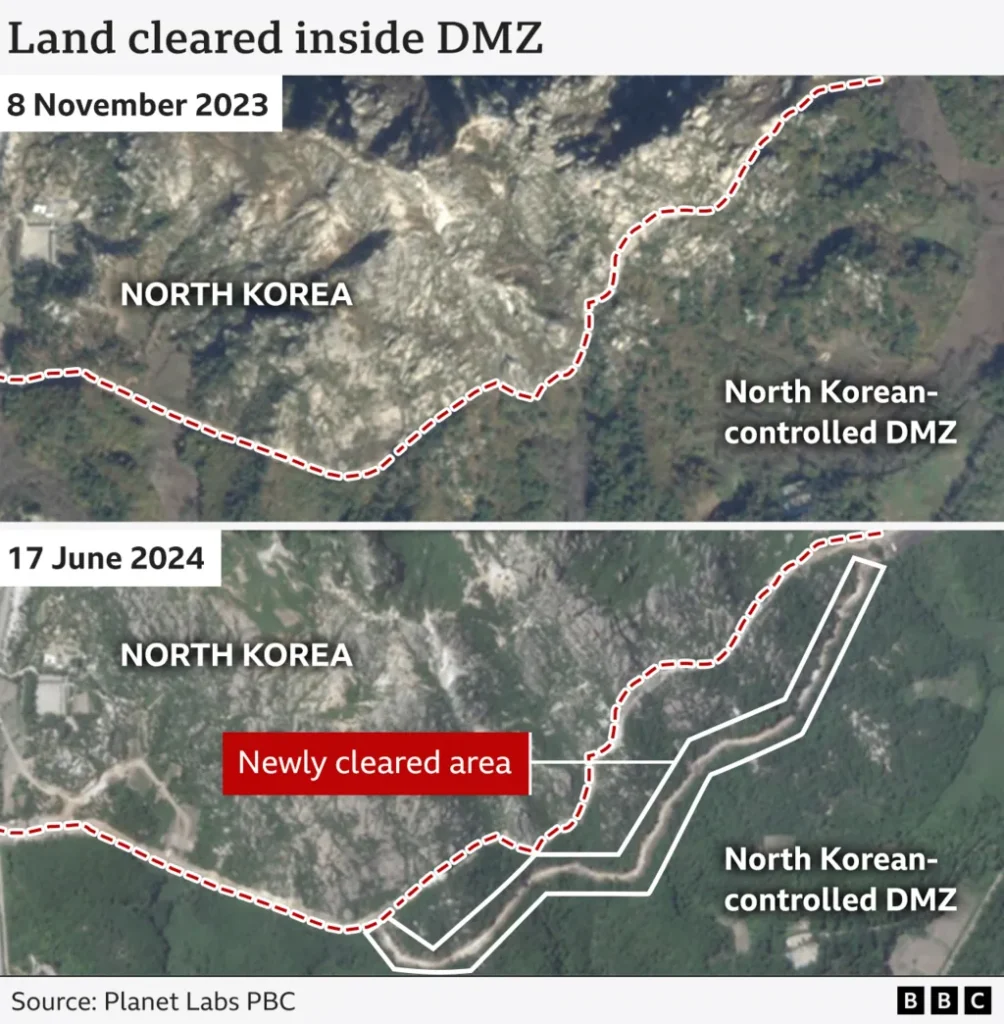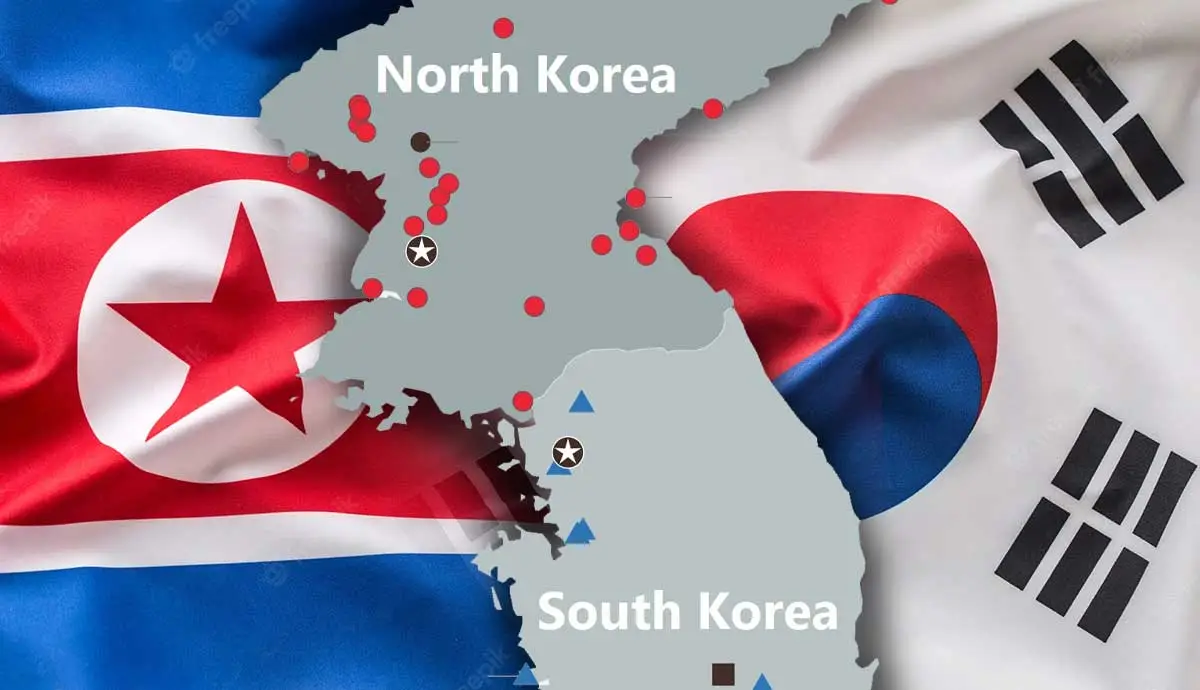Reports by the BBC suggest that North Korea is constructing a wall in several places on its border with South Korea. Satellite images by the news agency also reveal that activities have taken place inside the Demilitarised zone (DMZ), which is a clear violation of the country’s truce with South Korea. The DMZ is a buffer area between the two countries who are technically still at war since they haven’t officially signed a peace agreement. This activity is unusual and creates suspicion at a time of heightened tensions between the two rival nations.

Table of Contents
Further Details
Satellite images procured by the BBC show three sections where construction has taken place, spreading over a total area of at least 1 km. There is a possibility that there could be more structures along the border. The exact time of construction of these walls cannot be determined due to a lack of high resolution satellite images. However, BBC has confirmed that these structures were not present in the satellite images last taken at the end of 2023.

Tensions Between North and South Korea
The history of North and South Korea is rooted in the division of the Korean Peninsula at the end of World War II in 1945. The peninsula was split along the 38th parallel, with the Soviet Union occupying the north and the United States occupying the south. This division led to the establishment of two separate governments in 1948: the communist Democratic People’s Republic of Korea (North Korea) and the capitalist Republic of Korea (South Korea).
Tensions between the two sides escalated into the Korean War in 1950, which ended in 1953 with an armistice but no formal peace treaty, leaving the two Koreas technically still at war. Since then, North Korea has been characterized by its authoritarian regime and focus on military strength, while South Korea has evolved into a prosperous democracy with a robust economy.
Recent Developments
While reunification seemed highly impractical, it has always been the stated goal of North Korea. At Least until 2024 when Kim Jong Un proclaimed that unification was no longer the country’s ambition. This has been labeled a significant policy change by experts. Mr Kim also went on to declare South Korea as its ‘principal enemy.’ Since this development, North Korea has been actively erasing symbols of reunification by erasing traces of the objective from official websites and also demolishing monuments. Many experts argue that the construction of the wall is a clear indication that North Korea does not pursue reunification.
Conclusion
In recent years, North Korea’s continued development of nuclear weapons and ballistic missiles has heightened regional and global concerns, leading to international sanctions and military exercises by South Korea and its allies. Despite occasional diplomatic engagements and inter-Korean summits, the underlying issues of denuclearization, human rights, and political legitimacy continue to fuel the strained relations between the two nations. Moreover, North Korea’s increasing diplomatic proximity with Russia has also led to global concerns with regard to arms trade.



